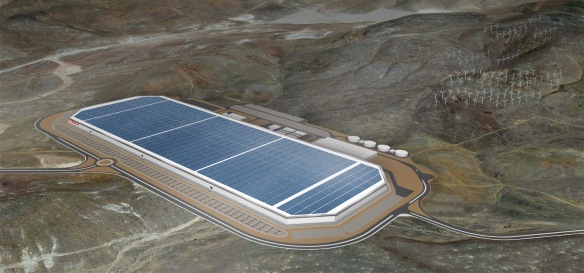
When you read about climate change in the news these days, it’s mostly about supercharged, destructive hurricanes, melting icecaps, and imminent catastrophe. Steve Westly, venture capitalist and former California State Controller, has a brighter vision. He shared it with a receptive group at an event hosted by Acterra at the Foster Foundation Gallery in Palo Alto.

Westly, a lean, animated man who reads younger than his 61 years, knows his stuff and his audience. He presented images and data to show a world in which energy production is moving towards renewable solar and wind at a much faster pace than predicted. The transportation sector is on the verge of a massive, positive change to electric and autonomous vehicles.
Much as Jeremy Rifkin proposes in The Third Industrial Revolution, Westly is placing his trust in the younger generation of millennials to pull off the work we need to combat the climate crisis.
Westly grew up in Santa Clara Valley, before it was called Silicon Valley, when it was mostly farmland, Stanford University, and not much else. He witnessed the sweeping changes that transformed the valley into the place where much of the technology that can save us is now based.
Westly has been involved for years. He was a board member with Tesla when it was a few dozen people in a small warehouse and has seen much more since. He knows his numbers.
Carbon dioxide, CO2, is invisible, so it’s harder for people to get upset about it increasing, but air pollution is easy to understand. While the skies have largely cleared over the last 30 years or so, they are beginning to darken again, thanks to significant pollution wafting over from China – as much as 25 percent of what we breathe in California originates there.
That’s because to support their economic growth, in recent years China was on a massive coal plant building spree. Now, however, that is changing to renewable energy, as the Chinese people demand an end to the choking clouds of pollution that could kill up to 83 million Chinese citizens over the next 25 years. Now, the Chinese are becoming the green energy world leaders.
Per Westly, coal and nuclear are out, while solar and wind are on the way up—much more quickly than they were projected to rise. Coal is too dirty and nuclear plants are too expensive. Meanwhile, the price of wind and solar continues to drop steadily—it’s at a fraction of where it was—while natural gas, currently a popular energy source, fluctuates.
Storage of solar and wind generated electricity has been a problem over the years, since the sun doesn’t shine at night and the wind doesn’t always blow, but the storage price is dropping quickly. Westly presented a chart showing a steeply descending line, depicting a 35 percent drop between 2016 and 2017 alone.

This drop is in part thanks to Tesla’s huge battery gigafactory in Nevada, which when complete will be the largest building in the world. Interestingly, this American plant has pushed the Korean LG and Japanese Panasonic/Sanyo battery makers to become more competitive, all to the consumers’ benefit.
Westly predicts affordable $25,000 electric cars in the next five years as part of a boom in these clean-running models. BMW, VW, and other companies are investing big time. It’s no longer going to be a small, fringe group, as EVs take over.
Westly says three things are going to make leaps of progress happen: The Internet of Things, where everything is connected; Big Data, with the ability to provide the enormous amount of data needed to make connected cars work; and a sharing economy. Together, these factors will contribute to the rise of the autonomous car in just a few years. It’ll be sooner than you think, Westly promises.
Westly is counting on millennials, with their different set of values, to lead the charge. They are now the largest population group, passing the aging baby boomers. Shared values of this generation include having a small carbon footprint, wanting a choice of connections, and having clean air, food, and water.
Other countries are already moving ahead with plans to dump the gasoline-powered car in the next few decades. Norway say it’s 2025. India, with its huge population, says 2030 will be it. Even England and France are talking about 2040 to sell the last petrol-powered car. The U.S. today is lagging, but, as usual, California is leading the way on its own.
Westly is sanguine on the possibilities of rapid, beneficial change to help combat global warming—with answers coming from Silicon Valley. The private sector, not the U.S. government, will lead the charge. It’s a very appealing vision.
_____________________________________
Acterra’s mission is to bring people together to create local solutions for a healthy planet. They put on worthwhile events and other activities in their efforts to get people involved in making a difference.
The Foster Foundation’s mission is to share artist-explorer Tony Foster’s powerful watercolor journeys to inspire reflection, discussion, and education about art, wilderness, and the natural world. Here’s a beautiful image of the Shiprock, New Mexico area, where I lived for a few years as a child:







